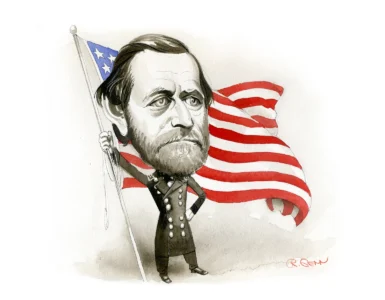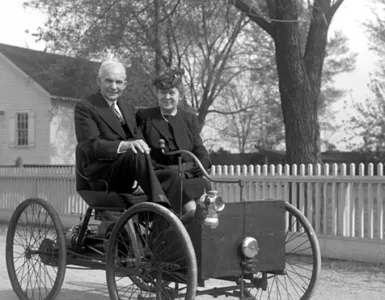Steve Jobs is widely regarded as one of the most influential entrepreneurs and innovators of the 20th and 21st centuries. The co-founder of Apple Inc., Jobs revolutionized multiple industries, from personal computing and animated films to music, phones, and digital publishing. Known for his creative vision, relentless drive, and passion for design, Jobs’ contributions continue to shape the technology we use today. This article explores Steve Jobs’ life journey, his achievements, the ups and downs of his career, and the lasting impact he had on the world.
Early Life and Childhood
Steve Jobs was born on February 24, 1955, in San Francisco, California. He was adopted by Paul and Clara Jobs, who raised him in Mountain View, California. From a young age, Jobs showed a fascination with electronics and gadgets. Paul Jobs, a mechanic and craftsman, taught his son how to work with his hands, which fostered Steve’s early interest in design and technology.
Jobs attended Homestead High School, where he met Steve Wozniak, a fellow technology enthusiast who would later become his business partner. Despite being highly intelligent, Jobs was known to be a nonconformist who disliked the structure of traditional schooling. After high school, he briefly attended Reed College in Oregon but dropped out after six months, although he continued to audit classes in subjects like calligraphy, which later influenced his attention to design and typography at Apple.
Founding Apple and the Rise of Personal Computers
In 1976, Steve Jobs, along with Steve Wozniak and Ronald Wayne, founded Apple Computer in Jobs’ parents’ garage. The team created the Apple I, a computer designed and built by Wozniak. Unlike other computers at the time, the Apple I came as a fully assembled motherboard, ready to be plugged in and used. It was a modest success, selling about 200 units.
The real breakthrough came with the Apple II in 1977, one of the first highly successful mass-produced personal computers. Unlike the Apple I, the Apple II came with a built-in keyboard, color display, and the ability to run software programs, making it far more user-friendly. The success of the Apple II transformed Apple into a major player in the emerging computer industry.
The Macintosh and Revolutionizing Personal Computing
Jobs’ vision was to create a computer that was not just for tech enthusiasts but for everyone—a computer that was beautifully designed, intuitive, and powerful. This vision culminated in the Macintosh (Mac), released in 1984. The Mac was groundbreaking, introducing the first commercially successful graphical user interface (GUI), which replaced complex text commands with icons, windows, and a mouse for navigation. Jobs’ passion for design led to the Mac’s sleek appearance, which stood out from other computers of the time.
The release of the Mac was accompanied by an iconic television ad during the 1984 Super Bowl, directed by Ridley Scott. The commercial, which referenced George Orwell’s novel 1984, portrayed Apple as a revolutionary force fighting against conformity and the status quo, represented by its competitor, IBM. The Mac set the standard for personal computing, influencing how people interacted with computers.
Leaving Apple and Founding NeXT and Pixar
Despite the success of the Macintosh, Jobs faced challenges within Apple. Conflicts arose between him and Apple’s then-CEO John Sculley, whom Jobs had hired. In 1985, following a power struggle and declining sales of the Mac, Jobs was ousted from the company he co-founded.
Undeterred, Jobs started a new venture called NeXT Inc., aiming to build high-end computers for business and education. Although NeXT computers were not commercially successful, they were technologically advanced and had a major influence on future computing. Notably, the NeXT operating system later became the foundation for Apple’s macOS.
During this period, Jobs also bought The Graphics Group from Lucasfilm in 1986, which would later become Pixar Animation Studios. Jobs’ investment and leadership were instrumental in transforming Pixar into a powerhouse of computer animation. In 1995, Pixar released Toy Story, the world’s first full-length computer-animated film, which was a huge critical and commercial success. Pixar went on to produce hits like Finding Nemo, The Incredibles, and Monsters, Inc., revolutionizing the animation industry. In 2006, Disney acquired Pixar for $7.4 billion, making Jobs Disney’s largest shareholder.
Return to Apple and the iRevolution
In 1996, Apple, struggling financially and losing its innovative edge, acquired NeXT for its operating system. This brought Jobs back to the company he had co-founded. By 1997, he was named Apple’s interim CEO, marking the beginning of a period of incredible innovation and growth.
One of Jobs’ key achievements was to streamline Apple’s product line and refocus the company on a small number of products. Under his leadership, Apple launched several game-changing devices, starting with the iMac in 1998, which combined stylish design with advanced technology. The iMac’s colorful, translucent look made it an instant hit, rejuvenating Apple’s brand.
Jobs’ next major move was to revolutionize the music industry with the introduction of the iPod in 2001 and the iTunes Store in 2003. The iPod was a sleek, portable music player that could hold thousands of songs, while the iTunes Store provided a legal platform to purchase and download music. Together, they changed the way people listened to music and made Apple a leader in the digital music market.
The most transformative product of all was the iPhone, released in 2007. Combining a phone, a touchscreen iPod, and an internet communicator, the iPhone changed the way people interacted with technology. Its simple user interface, combined with the App Store that followed in 2008, made the iPhone a revolutionary device that led to the era of smartphones. The iPhone quickly became Apple’s best-selling product, forever changing the mobile phone industry and influencing how we communicate, work, and live today.
Another major innovation was the iPad in 2010, a tablet that bridged the gap between smartphones and laptops. The iPad created a new category of devices, offering a larger screen for web browsing, gaming, and media consumption, while being portable and easy to use.
Design Philosophy and Leadership Style
Steve Jobs was known for his perfectionism, attention to detail, and desire for simplicity in design. He believed that the user experience should be as seamless as possible, with every element of a product carefully crafted, from the hardware design to the software interface. This philosophy is captured in Apple’s products, known for their minimalist aesthetics, user-friendly interfaces, and premium quality.
Jobs was also known for his demanding leadership style. He was passionate, intense, and had high expectations for his team, often pushing them to achieve what seemed impossible. While some found him difficult to work with, others admired his vision, drive, and ability to inspire people to create world-changing products.
Health Struggles and Legacy
In 2004, Steve Jobs was diagnosed with a rare form of pancreatic cancer, which he initially kept private. Over the next few years, his health declined, and he took multiple medical leaves from Apple. Despite his illness, Jobs continued to lead the company, overseeing the release of innovative products and guiding Apple’s growth.
In August 2011, Jobs resigned as CEO, passing the role to Tim Cook, Apple’s COO at the time. He remained Chairman of the Board but stepped away from day-to-day operations. On October 5, 2011, Steve Jobs passed away at the age of 56. His death was met with an outpouring of tributes from around the world, as people reflected on how his work had changed their lives.
Jobs’ legacy lives on in the technology and products he helped create. Under his leadership, Apple became one of the most valuable companies in the world, known for its innovation and commitment to design excellence. Products like the iPhone, Mac, and iPad continue to shape the way people communicate, create, and work, making Jobs’ influence undeniable.
Conclusion
Steve Jobs’ life was marked by creativity, innovation, and a relentless pursuit of excellence. From the early days of the Apple II to the revolutionary iPhone, Jobs’ vision transformed multiple industries, from personal computing and animation to music and mobile communications. He left behind not only a company that continues to push the boundaries of technology but also a legacy that has changed the way we interact with the world.
Jobs’ story is a testament to thinking differently, embracing risk, and having a vision for the future. His impact on technology, design, and culture is felt every day, as people around the world use products that were born from his imagination and passion for perfection.





Add comment